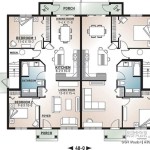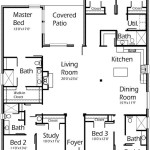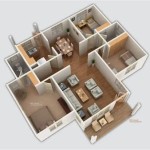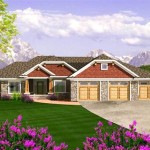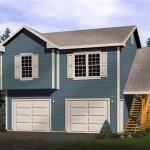Simple 2 Bedroom Floor Plan With Dimensions
A simple 2-bedroom floor plan, complete with dimensions, provides a foundational framework for residential design. Understanding dimensions is crucial for space planning, furniture arrangement, and ensuring the livability of the home. These plans are often sought by first-time homebuyers, small families, or individuals looking for a compact and efficient living space. This article will delve into the key considerations and components of a simple 2-bedroom floor plan, emphasizing the importance of dimensions for optimal functionality.
The term "simple" in this context refers to a floor plan that prioritizes functionality and minimizes complex architectural features. The design typically incorporates standardized room sizes, straightforward layouts, and efficient use of space. These plans are often more cost-effective to construct and maintain, making them an attractive option for budget-conscious individuals and developers.
A typical simple 2-bedroom floor plan includes several indispensable areas, each requiring careful attention to dimensioning. These include the living room, kitchen, bedrooms, bathrooms, and any additional spaces like a dining area or entry foyer. The optimal size and configuration of these areas directly impact the overall comfort and usability of the home.
Key Points to Consider in a 2-Bedroom Floor Plan
Several key points must be considered when designing or evaluating a simple 2-bedroom floor plan. These elements influence the functionality, comfort, and overall living experience within the home. Ignoring these considerations can lead to a poorly designed and underutilized space.
1. Space Allocation and Flow: The allocation of space to each room is paramount. The living room, often the focal point of the home, should be adequately sized to accommodate furniture and provide comfortable circulation. Bedrooms should be spacious enough to accommodate beds, wardrobes, and personal belongings without feeling cramped. The kitchen, even in a simple design, needs sufficient counter space, storage, and room for appliances. Crucially, the flow between these spaces needs to be seamless and intuitive. A well-designed floor plan minimizes wasted space and ensures easy movement between rooms.
Dimensions are the backbone of space allocation. Consider the following typical dimensions, which can be adjusted based on specific needs and preferences:
- Living Room: 12ft x 15ft to 15ft x 20ft
- Master Bedroom: 12ft x 12ft to 14ft x 14ft
- Second Bedroom: 10ft x 10ft to 12ft x 12ft
- Kitchen: Varies greatly, but a minimum of 8ft x 10ft is reasonable
- Bathroom: 5ft x 8ft to 8ft x 10ft
These are merely guidelines; the actual dimensions should be tailored to the intended use and the overall square footage of the home. The spatial relationship between rooms is also critical. For example, a kitchen that opens directly into the living room can create a more social and connected living space. Conversely, strategically placed hallways can provide privacy and separation between different areas of the home.
2. Storage Solutions: Adequate storage is often overlooked in simple floor plans, but it is essential for maintaining an organized and clutter-free living environment. Built-in wardrobes, closets, and shelving units should be strategically located throughout the home. The dimensions of these storage spaces should be carefully considered to accommodate various items, from clothing and linens to household supplies and personal belongings.
Walk-in closets in the master bedroom are a desirable feature, typically requiring a minimum footprint of 5ft x 6ft. Standard closets in the second bedroom should be at least 2ft deep and wide enough to accommodate hanging clothes. Kitchen storage can be maximized with cabinets that extend to the ceiling and incorporate pull-out shelves. Linen closets in bathrooms are also essential for storing towels and toiletries.
Beyond traditional closets, consider incorporating under-bed storage, built-in benches with storage compartments, and strategically placed shelving units to maximize storage space. Optimizing vertical space is particularly important in smaller homes where floor space is limited.
3. Natural Light and Ventilation: Natural light and ventilation are crucial for creating a comfortable and healthy living environment. The placement and size of windows should be carefully considered to maximize sunlight penetration and airflow. Windows should be strategically positioned to take advantage of natural light throughout the day while minimizing glare and heat gain. Proper ventilation is also essential for preventing moisture buildup and maintaining air quality. Window dimensions and placement directly impact these factors.
Large windows in the living room and bedrooms can bring in ample natural light. Consider incorporating skylights in areas where natural light is limited, such as hallways or bathrooms. The orientation of the home also plays a significant role in sunlight exposure. South-facing windows typically receive the most sunlight throughout the day, while north-facing windows receive the least.
Window size should be proportional to the room size. As a general rule, the total window area should be at least 10% of the floor area of the room. Operable windows are essential for ventilation. Casement windows, awning windows, and double-hung windows are all good options for maximizing airflow. Cross-ventilation, where windows are placed on opposite sides of the room, can further enhance airflow.
Examples of Simple 2-Bedroom Floor Plan Layouts
Several common layouts exist for simple 2-bedroom floor plans, each with its own advantages and disadvantages. Understanding these layouts can help homeowners and designers choose the most suitable option for their needs.
1. Linear Layout: In a linear layout, rooms are arranged along a central hallway. This is a common and efficient layout, particularly for apartments and smaller homes. The living room is typically located at one end of the hallway, with the bedrooms and bathrooms branching off from the hallway. The kitchen may be located near the entrance or at the end of the hallway, depending on the design. The dimensions of the hallway itself are crucial for circulation. A hallway that is too narrow can feel cramped and restrictive, while a hallway that is too wide wastes valuable space.
2. Open Concept Layout: An open concept layout combines the living room, dining area, and kitchen into a single, unified space. This layout is popular for its social atmosphere and its ability to maximize natural light. The bedrooms and bathrooms are typically separated from the open living area for privacy. In an open concept layout, the dimensions of the combined living space are critical. The space needs to be large enough to accommodate furniture and activities without feeling cluttered. Careful planning is needed to define different areas within the open space, such as using furniture placement or changes in flooring to delineate the living room from the dining area.
3. Split Bedroom Layout: A split bedroom layout places the bedrooms on opposite sides of the living room or central area. This layout provides greater privacy for occupants, making it ideal for families with older children or for roommates. The master bedroom is typically located on one side of the home, while the second bedroom is located on the other side. The living room serves as a buffer zone between the two bedrooms. This layout requires careful consideration of noise transmission. Walls and doors should be adequately insulated to minimize sound transfer between the bedrooms and the living room.
Importance of Accurate Dimensions
The accuracy of dimensions in a 2-bedroom floor plan cannot be overstated. Inaccurate dimensions can lead to a range of problems, from difficulties in furniture placement to construction errors. Accurate dimensions ensure that the home is built according to the plan and that the spaces are functional and comfortable.
1. Furniture Placement: Precise dimensions are essential for planning furniture placement. Before purchasing furniture, it is crucial to measure the dimensions of each room and to create a furniture layout plan. This will help to ensure that the furniture fits comfortably in the space and that there is sufficient room for circulation. Inaccurate dimensions can lead to the purchase of furniture that is too large or too small for the room, resulting in a cluttered or underutilized space.
2. Construction Accuracy: Accurate dimensions are also crucial for construction accuracy. Builders rely on the dimensions provided in the floor plan to construct the home. Inaccurate dimensions can lead to errors in the building process, such as walls that are too short or rooms that are too small. These errors can be costly and time-consuming to correct. A well-dimensioned floor plan ensures that the home is built according to the design intent and that the spaces are functional and aesthetically pleasing.
3. Code Compliance: Building codes often specify minimum dimensions for various rooms and features in a home. Accurate dimensions are essential for ensuring that the floor plan complies with these codes. Failure to comply with building codes can result in delays in the construction process or even the rejection of the building permit. A well-dimensioned floor plan takes into account all applicable building codes and ensures that the home is safe and habitable.
In conclusion, a simple 2-bedroom floor plan with dimensions provides a solid foundation for creating a functional and comfortable living space. Careful consideration of space allocation, storage solutions, natural light, and ventilation is essential. Understanding the various layout options and the importance of accurate dimensions allows homeowners and designers to create a home that meets their specific needs and preferences.

Simple 2 Bedroom House Plans In Kenya 39e Planos De Casa Simples Plano Plantas Casas Americanas

2 Bedroom Modular Home Floor Plans Rba Homes Bungalow Condo

12 Simple 2 Bedroom House Plans With Garages Houseplans Blog Com

Simple Two Bedroom House Plans With Dimension Cadbull

2 Room House Plans Low Cost Bedroom Plan Nethouseplansnethouseplans

Unique 2 Bedrooms House Plans With Photos New Home Design De4 Small Floor Tiny Two Bedroom Plan

Two Bedroom Small House Design Shd 2024030 Pinoy Eplans

Low Cost 2 Bedroom House Plan 70sqm Floor Plandeluxe

12 Simple 2 Bedroom House Plans With Garages Houseplans Blog Com

Simple 2 Bedroom House Plan 21271dr Architectural Designs Plans

